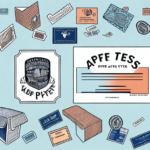Importance of Accurate Box Dimensions in Shipping
Accurate box dimensions are essential in the shipping industry as they directly impact the safety, cost, and efficiency of transporting products. For businesses and individuals alike, understanding and implementing precise measurements ensures that packages are handled correctly, arrive intact, and incur minimal shipping fees.
Ensuring Secure Packaging
Properly measured boxes guarantee that products are securely packaged, minimizing movement during transit. This reduces the likelihood of damage or breakage, safeguarding both the sender's reputation and the recipient's satisfaction.
Cost Efficiency Through Dimensional Accuracy
Shipping carriers often use dimensional weight pricing, which considers both the size and weight of a package. By optimizing box dimensions, businesses can avoid unnecessary dimensional weight fees. For example, according to the UPS Shipping Guidelines, optimizing box size can lead to significant cost savings.
Types of Shipping Boxes and Their Dimensions
Selecting the appropriate type of shipping box is crucial for efficient and cost-effective shipping. Different box types cater to varying product sizes, weights, and fragility levels.
Corrugated Boxes
Corrugated boxes are widely used for shipping heavier and bulkier items. They come in standard sizes, typically ranging from 6x6x6 inches to 48x48x48 inches, and are known for their durability and strength.
Folding Cartons
Folding cartons are ideal for smaller, lightweight items. They are easy to assemble and offer a cost-effective solution for businesses shipping products like electronics, cosmetics, or apparel.
Specialty Boxes
Specialty boxes are designed for specific purposes, such as shipping fragile items like glassware or electronics. These boxes often include additional padding and reinforcement to provide extra protection during transit.
Measuring and Calculating Box Dimensions
Accurate measurement of box dimensions is fundamental to optimizing shipping operations. This involves determining the length, width, and height of a package, which are critical factors in calculating shipping costs and ensuring compliance with carrier requirements.
How to Measure Box Dimensions
Use a reliable tape measure to record the length, width, and height of the box. It's advisable to add an extra inch or two to accommodate packing materials, ensuring your items are well-protected.
Understanding Dimensional Weight
Dimensional weight, or volumetric weight, is a pricing technique used by carriers that accounts for the package's volume. It's calculated using the formula: (Length x Width x Height) / dim factor. For instance, FedEx uses a dim factor of 139. Understanding your carrier's dimensional weight formula can help you avoid unexpected shipping costs. Refer to the FedEx Dimensional Weight Calculator for detailed guidelines.
Common Measurement Mistakes
- Using inaccurate or outdated measuring tools.
- Failing to account for packing materials.
- Ignoring carrier-specific size restrictions.
Choosing the Right Box for Your Products
Selecting the appropriate box size and type is a pivotal step in the shipping process. Consider factors such as the product's weight, fragility, and quantity when making your selection.
Factors to Consider
- Weight and Fragility: Heavier or more delicate items require stronger, more protective packaging.
- Quantity of Items: Multiple items may need larger boxes or specialized packaging to prevent movement.
- Carrier Requirements: Ensure the box meets the size and type specifications of your chosen shipping carrier.
Customizing Box Dimensions
For unique or irregularly shaped items, customized box dimensions provide a tailored packaging solution. Custom boxes enhance product presentation and offer superior protection during transit.
Best Practices for Packaging and Labeling
Implementing best practices in packaging and labeling ensures that shipments are handled efficiently and reach their destination without issues.
Optimizing Package Protection
- Use adequate padding materials such as bubble wrap or foam inserts to protect items.
- Fill void spaces in the box to prevent item movement.
Effective Labeling Techniques
- Visibility: Place labels in a clear, upright position on the largest side of the box.
- Durability: Use waterproof labels to withstand handling and environmental conditions.
- Compliance: Ensure labels meet carrier specifications to avoid delays.
Technological Advancements in Box Dimensioning
Advancements in technology are revolutionizing how businesses measure and manage box dimensions, leading to increased efficiency and cost savings.
Automated Dimensioning Systems
Automated systems employ lasers and 3D cameras to swiftly and accurately measure box dimensions, reducing manual errors and saving time. According to a Supply Chain Digital report, companies implementing automated dimensioning have seen up to a 25% increase in measurement accuracy.
Smart Packaging Solutions
Smart packaging incorporates technology such as sensors and IoT devices to monitor and manage the condition of shipments in real-time. These solutions can provide data on temperature, humidity, and handling, ensuring products remain in optimal condition throughout the shipping process.
Case Studies and Real-World Applications
Real-world examples illustrate the tangible benefits of accurate box dimensions in shipping operations.
Cost Reduction Through Optimized Packaging
A leading e-commerce company reported a 30% reduction in shipping costs after implementing precise box dimensioning and optimizing packaging materials.
Enhanced Efficiency with Automated Systems
Another business streamlined its warehouse operations by adopting automated dimensioning technology, which led to a 40% increase in processing speed and reduced measurement-related errors.
Conclusion: The Vital Role of Accurate Box Dimensions in Shipping
Accurately measured and appropriately labeled box dimensions are fundamental to successful shipping operations. They ensure cost-effective, efficient, and secure transport of goods, enhancing customer satisfaction and business profitability. By adopting best practices and leveraging modern technologies, businesses can optimize their packaging processes and stay competitive in the ever-evolving shipping industry.






















